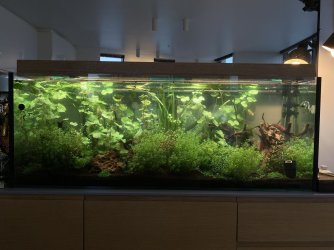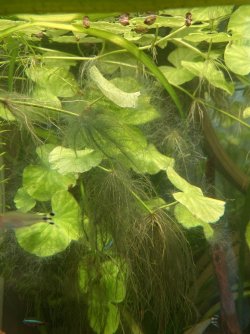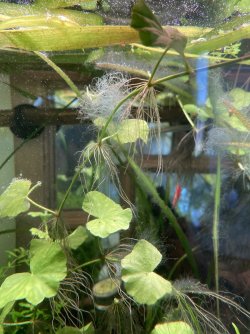kieran01pd2016
New Member
I have a 180L tank that's fully stocked and heavily planted.
Over the last few weeks, there was a single clump of blue/green hair algae that formed on one of the stems in my Brazilian pennywort.
I left it for a while until it was pretty unsightly, then I removed it in one big clump. However, after that, it spread all over the rest of the tank and seems to take a liking to my brazilians as well as some leaves of val
I've been manually removing it now for a week or so, but it's quite time consuming and I somewhat feel like I'm making it worse and just spreading it out more.
I put in a few stems of pothos that have just begun to root in the water and a large portion of red root floaters in the hopes of slowing it down.
The tanks got bladder snails for days, about 8 cherry shrimp (that I do see munching on the hairs frequently) and I just added 3 true SAE. Nitrates constantly sit at 10-15.
I've also reduced lighting intensity to 60% but that doesn't seem to be doing anything Unfortunately, the only place the tank would fit was in my living room that gets indirect light almost all day which I highly suspect is the problem.
Unfortunately, the only place the tank would fit was in my living room that gets indirect light almost all day which I highly suspect is the problem.
Any tips on how to deal with it?
Over the last few weeks, there was a single clump of blue/green hair algae that formed on one of the stems in my Brazilian pennywort.
I left it for a while until it was pretty unsightly, then I removed it in one big clump. However, after that, it spread all over the rest of the tank and seems to take a liking to my brazilians as well as some leaves of val
I've been manually removing it now for a week or so, but it's quite time consuming and I somewhat feel like I'm making it worse and just spreading it out more.
I put in a few stems of pothos that have just begun to root in the water and a large portion of red root floaters in the hopes of slowing it down.
The tanks got bladder snails for days, about 8 cherry shrimp (that I do see munching on the hairs frequently) and I just added 3 true SAE. Nitrates constantly sit at 10-15.
I've also reduced lighting intensity to 60% but that doesn't seem to be doing anything
Any tips on how to deal with it?






